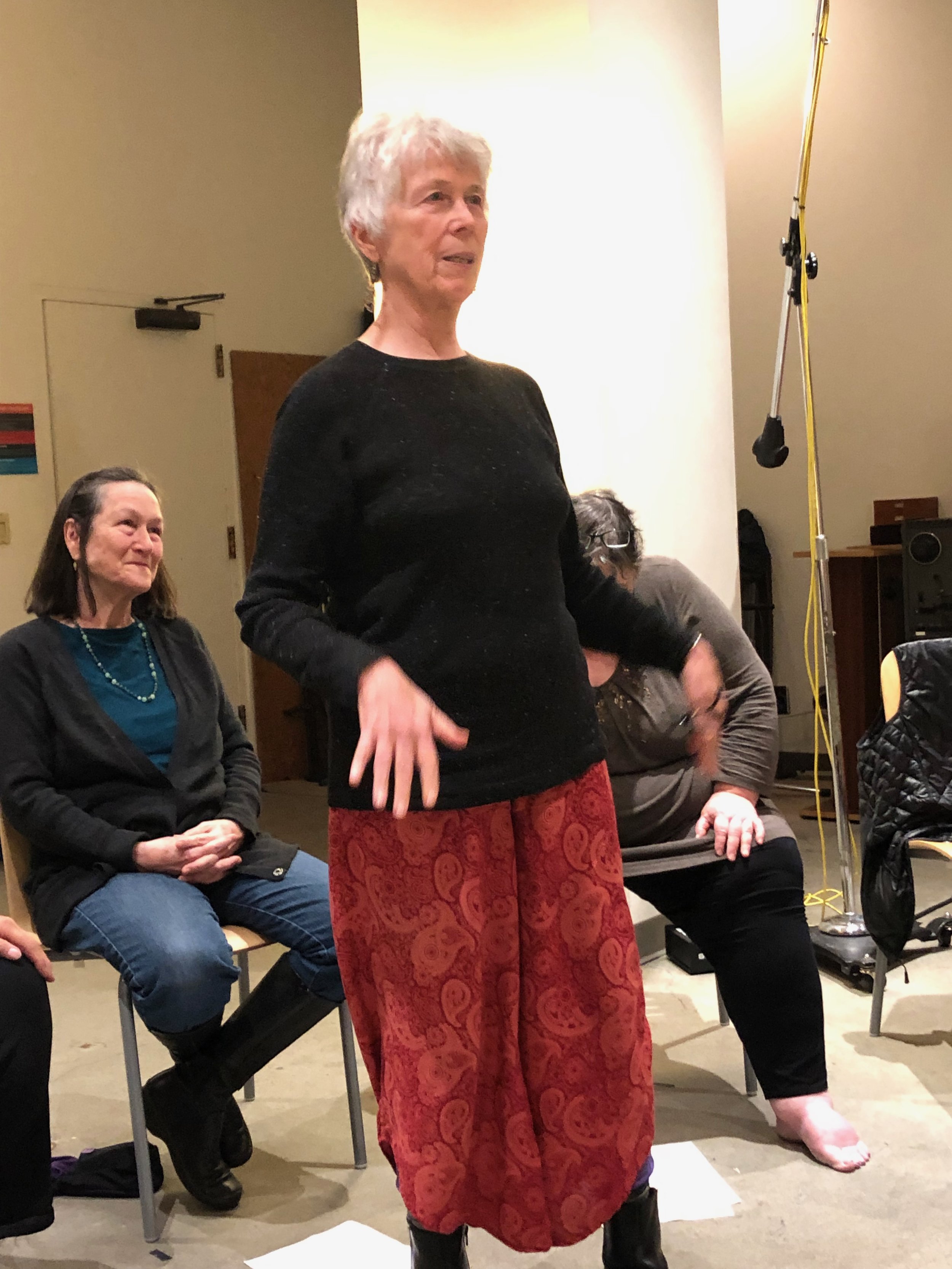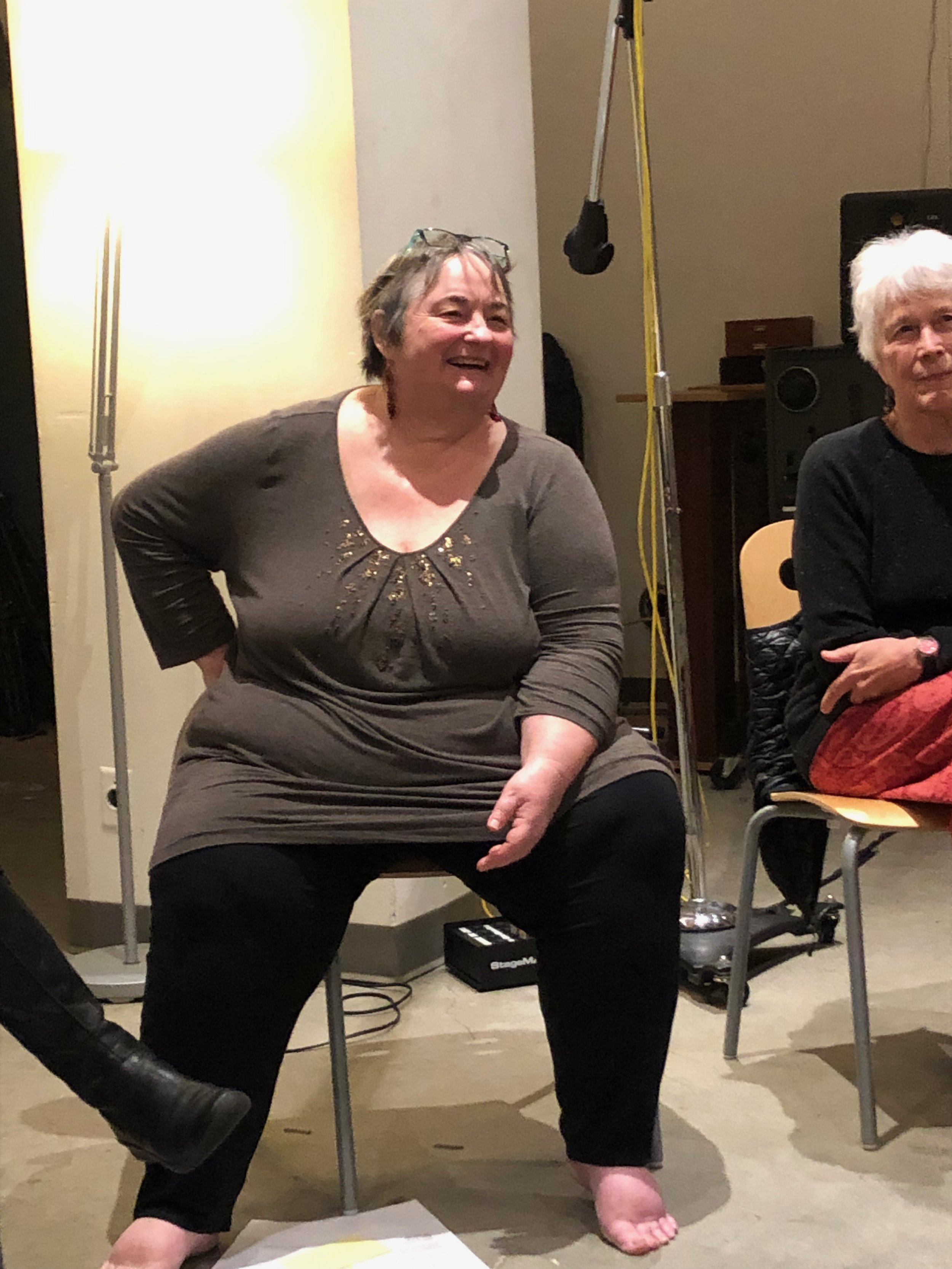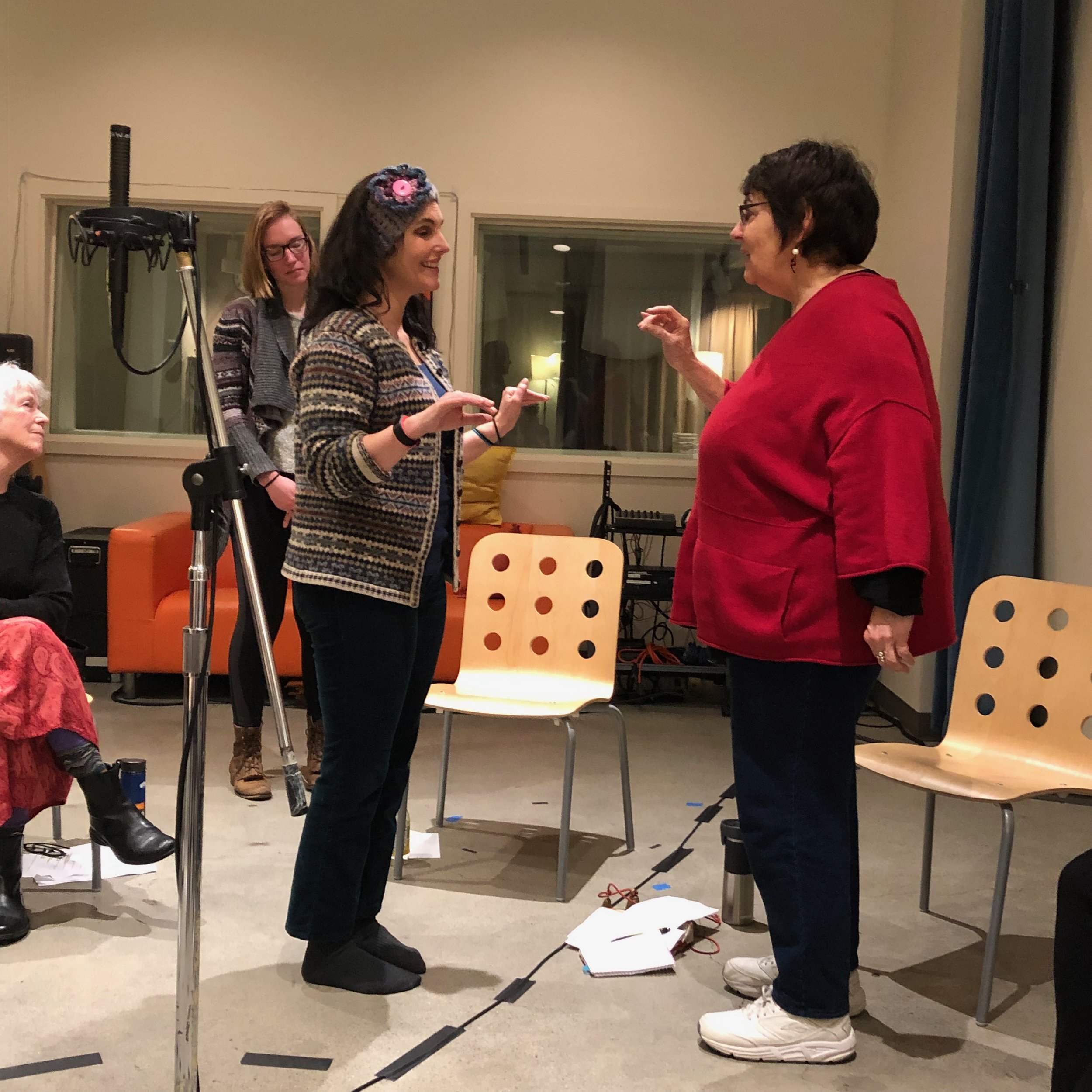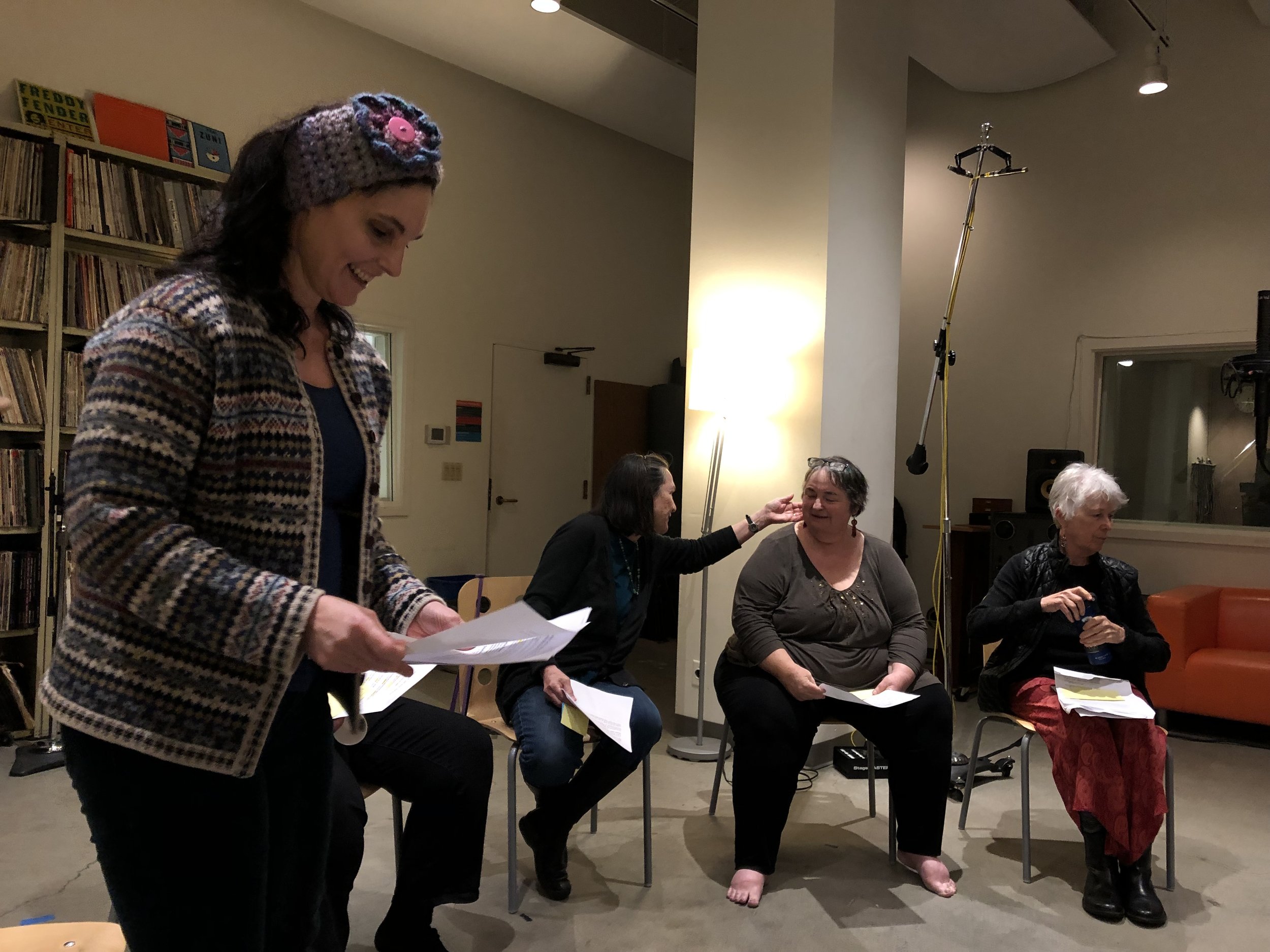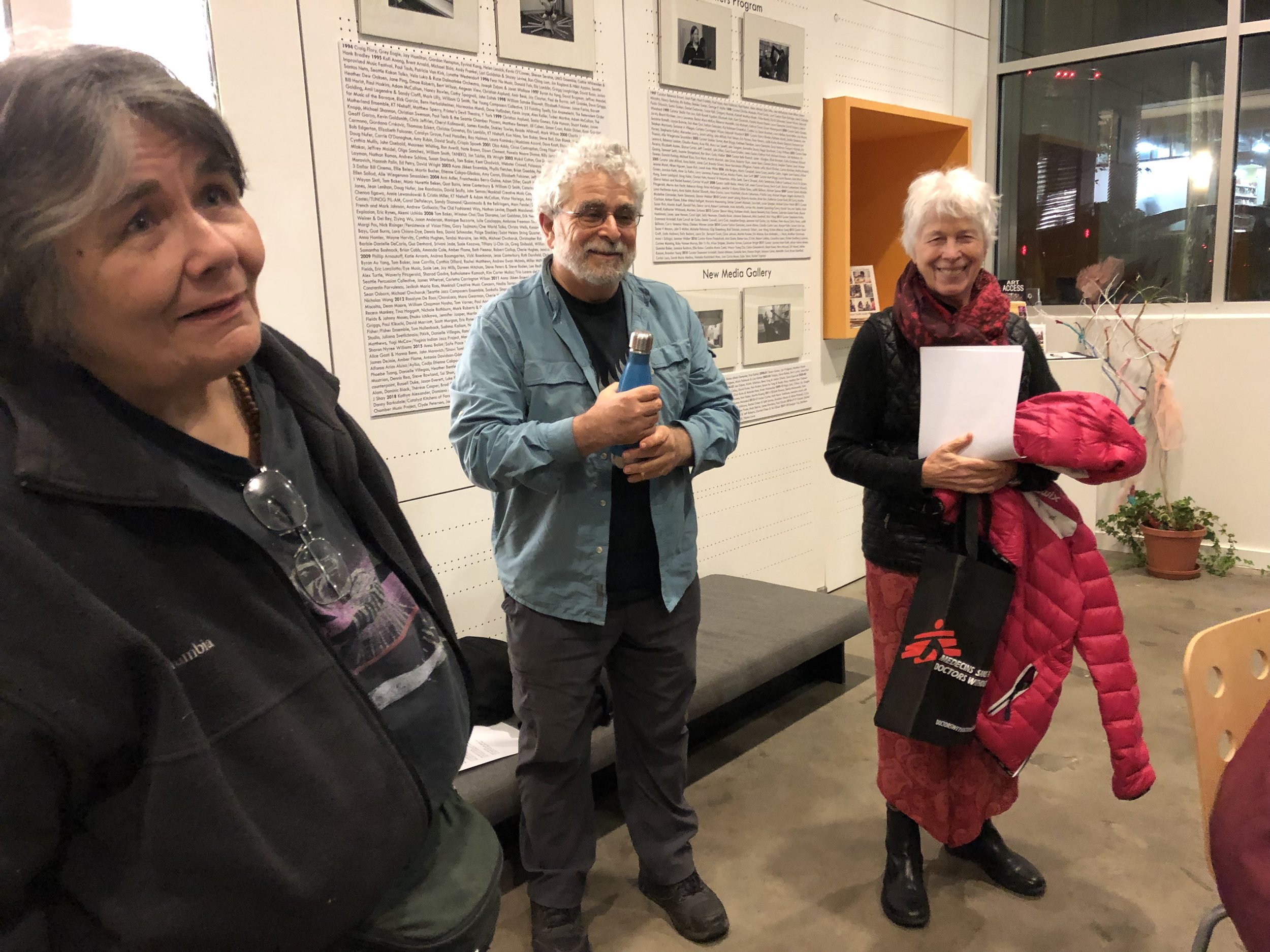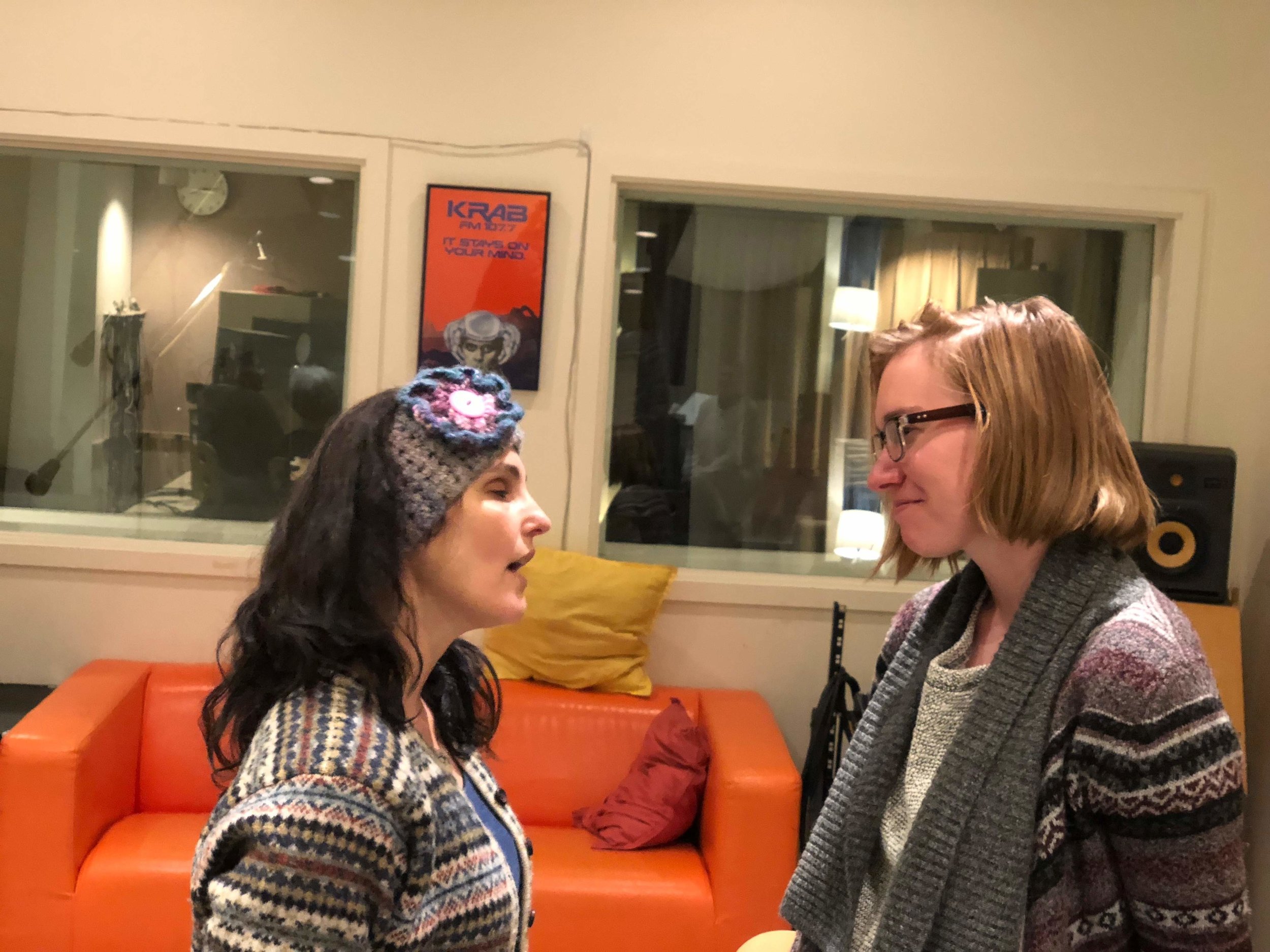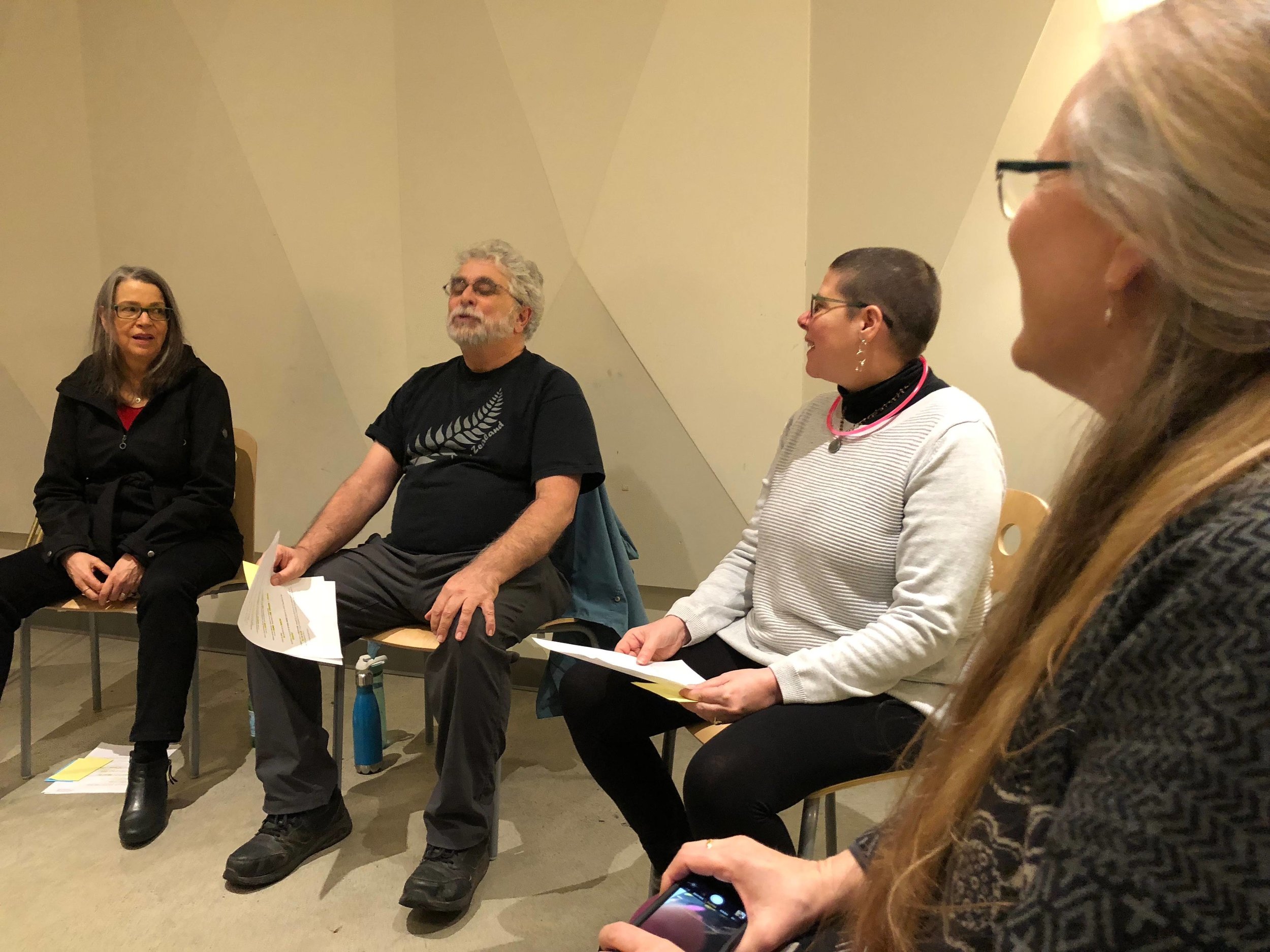A Holly Jolly Solstice Vocal Improv Ensemble
with Debby Boland Watt, Lynn Brunell, Christine Castigliano, Dharma Dailey, Steve Deutsch, Megan Grable, Liz Kohlenberg, Marline Lesh, Cindy Pickreign, Dorothy Rodes, Kate Thompson, & Rose Woodward
An hour of vocal improvisation inspired by the Winter Solstice. Created on the spot by vocal improvisers from across the Puget Sound.
Aired first on SPACE 101.1 FM Seattle December 2018. Lead Instigator: Dharma Dailey, gratefully assisted by Christine Castigliano & Debby Boland Watt. Photos: Debby Boland Watt & Christine Castigliano. Recorded at Jack Straw Cultural Center. Recording Engineer: Joel Maddox. Audio editing: Dharma Dailey & Marline Lesh.
SET LIST
Surrender to the Light. Circle Sing form. Ensemble led by Kate Thompson.
Mini-Solos Inspired by the Solstice. Ensemble.
Trio Band form. Solo by Dorothy Rodes.
Trio Drone form. Solo by Steve Deutsch. Supported by Marline Lesh & Cindy Pickreign.
The First Noel. Band form transitioning to Circle Sing. Solo by Debby Boland Watt.
Solstice: Dark Sounds, Add Light (full audio). Circle Sing. Ensemble led by Marline Lesh. Video clip.
It’s Like All My People Showed Up (full audio). Circle Sing. Ensemble led by Dorothy Rodes. Video clip.
There’s a Yearning This Time of Year. Call and Response to Solo Supported by Chant. Ensemble led by Liz Kohlenberg.
Winter Time Is Chill Time. Trio Band form. Solo by Dharma Dailey. Supported by Steve Deutsch & Kate Thompson.
Connecting at the Solstice. Trio Band form. Solo by Rose Woodward. Supported by & Dorothy Rodes.
Trio Band form (full audio). Solo by Cindy Pickreign. Supported by Dorothy Rodes & Rose Woodward.
Hold Strong to Dream Time. Three Given Themes form. Debby Boland Watt, Christine Castigliano, & Dharma Dailey
Snowballs, Snow Angels, My Heart Opens. Playback Theater form led by Kate Thompson.
Holly Jolly / We Are Alive Together (full audio). Circle Sing form. Led by Christine Castigliano. Video clip.
Fire, Friends, & Stories. Three Given Themes form. Liz Kohlenberg, Megan Grable, & Cindy Pickreign.
Soul au Soleil. Circle Sing led by Marline Lesh.
Allowing Starlight. Three Given Themes form. Marline Lesh, Rose Woodward, Christine Castigliano.
Free Solo by Cindy Pickreign. Video clip.
Free Solo (full audio) by Megan Grable. Video Clip.
We’re at Home. Band form. Solo by Christine Castigliano.
Little Drummer Boy Redux. Band form. Solo by Steve Deutsch.
Let the Darkness Be My Coverlet. Playback Theater form. Led by Liz Kohlenberg.
Light Is Returning. Written by Charlie Murphy. Ensemble led by Kate Thompson.
NERDY NOTES ABOUT THE RECORDING. Many improvisers believe true improvisation cannot be captured in recorded form. Some vitality escapes when players shift focus from those in the room. There we aimed for the most minimally intrusive recording set up we could manage: Instead of mic-ing players, we mic-ed the room. Aside from Joel in the engineering room, the recording is unattended. No player was wearing headphones. No retakes. No listen-backs. Those in the room did the best we could to forget we were being recorded.
Listeners will hear the virtues and limitations of this simple set up. Because the room is mic-ed, there are many instances of extreme stereo. A listener can hear how the sound changes in the room as player move about and rearrange their bodies. That’s very unusual to hear in professional recordings, but a large part of the in-person sound improv experience where players create a sound mix on the fly by simply moving about. Yet, there is a reason that this is an unusual set up in most recordings because there is little ability to separate the sound of soloists from other performers. Feature performers share the same aural space with feet tapping, throats clearing, papers rustling, and exuberant supporting singers.
Apart from the last song that was selected by Kate and written by now deceased Puget Sound artist Charlie Murphy, none of us knew what would happen until after it was over. Yet each of every player was responsible for helping to create and shape the container: To listen to the what had just happened and add to it with something the player deemed to be an appropriate response.Very light editing enables the listeners to follow the flow that the improvisers created as one improvisation flowed into the next. In this way, enough of the process is exposed to see where the improv excels and where it falters.
NERDY NOTES ABOUT THE SHOW FLOW & IMPROV FORMS. Each piece was created in the moment on the spot. For the first set, players were assigned to different forms following a flow inspired by Del Close’s explanation of the theater improv form “The Harold” which Close called a “an artful arrangement of games” around a given theme. The arrangement includes a mix of full ensemble group games interspersed with games that feature one to three players. The connecting tissue between the games is the theme.
About The Games :
Most of these games are explained in Rhiannon’s book Vocal River.
Band. Each player takes on a different and complementary part in the music— much as happens in an instrumental ensemble. Who is taking on each part is decided in advance. Parts are usually: “Motor” (a motif part that sets the tone and rhythm); Harmony; Bass; Percussion; and Soloist.
Call and Response. Perhaps the simplest of all song forms, it can be very powerful, but is not as demanding as other forms.
Circle Sing. As taught by Bobby McFerrin, Rhiannon, and friends. A leader makes up parts on the spot and assigning them to portions of the ensemble. The leader also directs and, often, solos or invites other to solo. Performers are usually arranged in the round, hence the name.
Solo Over Drone. One of the simplest of all games with a soloist and a few supporting players. It’s helpful if the soloist starts the drone then others join in. Sound best with four or more players holding the drone.
Mini-Solos. Players are asked to write a few words about the theme on index cards. These are lightly culled, shuffled, and handed out randomly. Each performer takes a mini-solo by singing whatever was written on the card they’ve been handed.
Playback Theater form. A few sense memories or values or aspirations related to the theme are elicited from the audience. Then a few singers build a piece based on the audience suggestions.
Supported “Listening” Solo. This is a paired down version of Band as Rhiannon teaches it. We (Dharma, Christine, & Debby) added “supported” into the title of the game to emphasize the goal of the players who are not soloing. We added “listening” into the name of the game to emphasize that we wanted the soloists to be responsive to the offers made by the supporting players.
Three Given Themes. Players are each given a card with a few words about the theme written on it. The only words each can sing are those on the assigned card. The objective is to make one piece from these disparate elements. It’s hard! But fun!






